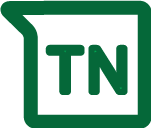You’ve probably been there - your original charging cable goes missing or gets damaged, and while walking through town you spot a vendor selling a shiny new $2 USB-C cable. It looks fine, so you grab it, head home, and plug it in expecting that familiar “fast charging” boost. But instead, your phone crawls, no fast-charge icon, no speed, just painfully slow charging.
It’s a common story in Zimbabwe, where more phones now support fast charging, yet most of the cheap replacement cables sold on the streets can’t keep up. Choosing the right cable isn’t just about price, it’s about performance and safety. Here’s a quick guide to help you pick the best USB cable for your phone and avoid wasting money on fakes
The Cable Makes or Breaks Your Charging Speed
Your charger is only half the story. The cable connecting it to your phone acts like a bridge for electricity. If that bridge is weak or narrow, no matter how powerful your charger is, you’ll still get slow charging.
That’s why using just any USB-C cable doesn’t always work. Some cables can only carry low current safely. Others can’t communicate properly with your phone or charger to enable higher speeds.
What to Look for When Buying a Cable
Here’s how to pick a cable that truly supports fast charging whether you’re buying from a downtown phone shop, OK Mart shelf, or online store.

1. Check the Power Rating (Watts or Amps)
Most standard USB-C cables are rated at 3A / 60W, good enough for regular charging but not ideal for today’s high-power smartphones. Fast charging relies on a balance of volts (V), amps (A), and watts (W) where volts are pressure, amps are flow, and watts (V × A) represent total power. For example, a 20V 3A charger gives 60W. To fully tap into modern fast chargers that push higher voltage and current, you need a cable rated for 5A or more often labelled 100W, 120W, or 240W. These cables safely handle the extra power without overheating or slowing down your charge.
2. Look for the E-Marker Chip
Inside quality USB-C cables is a small “E-Marker” chip. Think of it as the cable’s identity card. It tells your charger and phone how much power it can handle. Without it, the charger plays it safe and limits the speed. If the packaging or listing mentions E-Marked Cable, that’s a big plus.
3. Stick to Trusted Brands
Not all cables are built the same. Go for known brands like Anker, Tecno, Musungo. They follow proper safety standards and last longer than no-name cables that may overheat or break easily.
4. Buy Original When You Can
If your phone came with a fast charger, the cable inside that box is usually the best match. If you lose it, try getting an official replacement from your brand’s store or authorised reseller. Mixing cables from random brands can reduce performance.
5. Read the Fine Print
When shopping online, scroll past the flashy product name and read the specifications. Look for numbers like 100W / 5A and terms like PD 3.0, QC 4.0, or SuperCharge compatible. Those are signs of genuine fast-charging support.
Charging Speed ? Data Speed
Here’s another thing most people miss: charging speed and data speed aren’t the same.
A cable can charge fast but still transfer files slowly. If you regularly move videos or photos between devices, look for cables marked USB 3.1 or 10Gbps those handle both power and data well.
Why It Matters
Modern smartphones charge faster than ever, but only when every part of the chain wall socket, charger, and cable is up to the task.
A poor-quality cable can waste time, reduce charging efficiency, or even damage your charger over time.
So next time you buy one, don’t just grab the cheapest cable at the till. Check the wattage, look for the amp rating, and stick with reputable brands.
Join WhatsApp Channel
Stay up-to-date with the latest technology news and trends by joining our exclusive WhatsApp channel! Get instant access to breaking news, insightful articles
 TechNews
TechNews







Please login or create account to comment.